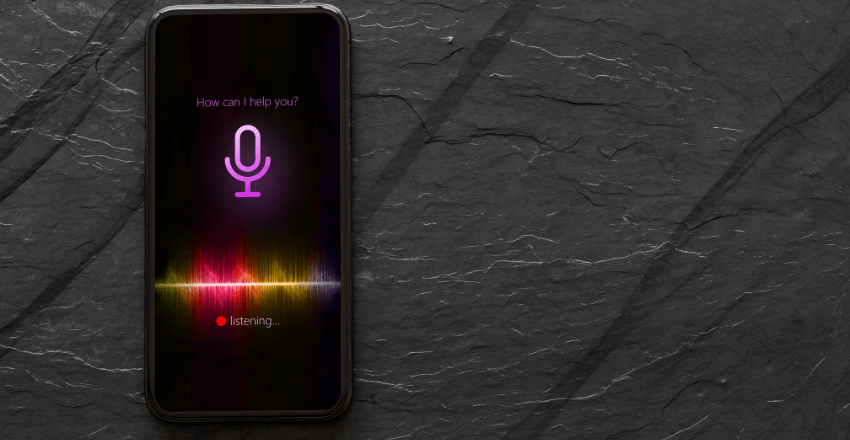Voice-activated app development has undergone significant advancements, pushing the boundaries of innovation and revolutionizing the way we interact with technology. From its roots in the 1950s with systems that could only understand numbers and limited words, voice recognition technology has come a long way.
The 1980s brought about the Hidden Markov Model, a breakthrough advancement that paved the way for more sophisticated speech recognition software. In the 1990s, Dragon Dictate was released as the first consumer voice recognition system, marking a significant milestone in the industry. Then came the early 2000s when Google introduced the Google Voice Search app, utilizing data centers for processing and personalized recognition.
The Roots of Voice Recognition Technology
Voice recognition technology has come a long way since its humble beginnings in the 1950s. In the early days, systems like Audrey and Shoebox were only able to understand numbers and a limited set of words. However, advancements like the Hidden Markov Model in the 1980s paved the way for more sophisticated speech recognition software.
One of the major breakthroughs in voice recognition technology came in the 1990s with the release of Dragon Dictate. This was the first consumer voice recognition system and had a significant impact on the industry. Dragon Dictate allowed users to dictate text and have it transcribed accurately, paving the way for the widespread adoption of voice recognition technology.
By the early 2000s, Google introduced the Google Voice Search app, which further propelled voice recognition technology into the mainstream. This app utilized data centers for processing and personalized recognition, making voice search more accessible and efficient. This marked a significant shift in how voice recognition technology was integrated into everyday devices.
Today, voice recognition technology is seamlessly integrated into smartphones, digital assistants like Siri and Amazon’s Alexa, and even vehicles. The ongoing advancements in data collection and cloud-based processing have greatly improved the accuracy and localization of voice recognition systems. With the ability to learn from user interactions, these systems are becoming more intuitive, promising even greater advancements in the future of voice-activated app development.
Dragon Dictate: Pioneering Consumer Voice Recognition
In the 1990s, Dragon Dictate revolutionized voice recognition technology by becoming the first widely available consumer system. This groundbreaking software allowed users to speak naturally and have their words transcribed into text, eliminating the need for manual typing. Dragon Dictate quickly gained popularity among professionals and individuals alike, transforming the way people interacted with their computers.
Dragon Dictate’s success can be attributed to its accurate speech recognition capabilities and user-friendly interface. The software employed advanced algorithms and models to understand and interpret spoken language, making it one of the most reliable voice recognition systems of its time. Users were able to dictate documents, compose emails, browse the internet, and even control various computer functions, all through the power of their voice.
With Dragon Dictate, the potential of voice recognition technology began to unfold. It paved the way for future advancements in the field, inspiring developers to explore new possibilities and improve the accuracy and functionality of voice-activated applications. Today, we see the legacy of Dragon Dictate in the widespread adoption of voice recognition systems across various devices, from smartphones to smart speakers, transforming the way we interact with technology in our daily lives.
| Dragon Dictate: Pioneering Consumer Voice Recognition | |
|---|---|
| Revolutionized voice recognition technology by becoming the first widely available consumer system | Increased productivity and efficiency through accurate speech recognition |
| Enabled users to dictate documents, compose emails, browse the internet, and control computer functions | Appealed to a wide range of users, from professionals to individuals with physical disabilities |
| Inspired future advancements in voice recognition technology | Contributed to the widespread adoption of voice recognition systems in various devices |
Google Voice Search: A Step Towards Mainstream Adoption

With the release of Google Voice Search in the early 2000s, voice recognition technology took a major step towards mainstream adoption. This innovative app utilized data centers for processing and personalized recognition, making it accessible to a wider audience.
The development of Google Voice Search revolutionized the way users interacted with their devices. By simply speaking their queries, users could perform searches, get directions, check the weather, and much more. The app relied on cloud-based processing, which allowed for faster and more accurate results by offloading the workload to data centers.
Google Voice Search’s ability to adapt to individual users’ voices and preferences marked a significant milestone in the evolution of voice recognition technology. It showcased the potential for personalized recognition, enabling users to achieve a more tailored and efficient experience. As a result, more and more people began embracing voice-activated technology as an integral part of their daily lives.
Advancements in cloud-based processing
One of the key aspects that set Google Voice Search apart was its innovative use of cloud-based processing. By leveraging the power of data centers, Google was able to provide faster and more accurate voice recognition results. This approach eliminated the need for complex and resource-intensive processing on individual devices, making the technology more accessible to a wider range of users.
The integration of cloud-based processing also allowed for continuous improvements in accuracy and localization. With the ability to collect and analyze vast amounts of data, voice recognition systems became more adept at understanding different accents, dialects, and languages. Over time, this led to enhanced user experiences and a broader global reach for voice-activated apps.
| Advantages of Google Voice Search |
|---|
| 1. Faster and more accurate results |
| 2. Personalized recognition for individual users |
| 3. Integration of cloud-based processing |
| 4. Continuous improvements in accuracy and localization |
The introduction of Google Voice Search marked a significant turning point in the evolution of voice-activated app development. Its cloud-based processing, personalized recognition, and emphasis on accuracy paved the way for the integration of voice recognition technology into various devices and applications. As the industry continues to advance, there is a promising future ahead, with devices becoming more intuitive and responsive to user interactions.
Integration into Everyday Devices

Today, voice recognition technology is seamlessly integrated into a wide range of devices, including smartphones, digital assistants, and vehicles. This integration has revolutionized the way we interact with our devices, offering convenience and accessibility like never before.
Smartphones, in particular, have become an integral part of our daily lives, and voice recognition technology has enhanced their usability. Whether it’s dictating a text message, setting reminders, or performing a quick search, users can simply speak commands to their smartphones, eliminating the need for typing and making tasks faster and more efficient.
Digital assistants like Siri and Amazon’s Alexa have also transformed the way we interact with technology. These intelligent virtual companions can perform a wide array of tasks, from answering questions and playing music to controlling smart home devices and ordering groceries. With just a voice command, users can multitask and access information hands-free, enhancing productivity and convenience.
The integration of voice recognition technology extends beyond personal devices and into our vehicles. Many modern cars now come equipped with voice-activated systems that allow drivers to make calls, send messages, and change music without taking their hands off the wheel. This technology promotes safer driving practices by reducing distractions and allows drivers to stay connected while on the go.
As voice recognition technology continues to advance, we can expect further integration into even more devices, making our lives even more connected and efficient. From smart home appliances to wearable devices, the possibilities are endless. The audible revolution brought about by voice-activated app development has opened up a world of opportunities for businesses and developers to embrace and capitalize on this rapidly evolving technology.
Enhanced Accuracy and Localization
Thanks to ongoing data collection and cloud-based processing, voice recognition systems have significantly improved in accuracy and have become more localized. Voice-activated apps can now better understand and interpret user commands, resulting in a more seamless and user-friendly experience.
Data collection plays a crucial role in the enhancement of voice recognition technology. By continuously gathering and analyzing a vast amount of voice data, these systems can identify patterns and trends, allowing for constant refinement and improvement. This process not only helps in recognizing a wider range of accents and languages but also enables the system to adapt to individual speech patterns, ensuring personalized and accurate recognition.
Cloud-based processing further contributes to the accuracy and localization of voice recognition systems. By leveraging the power of remote servers, these systems can handle complex algorithms and perform large-scale computations in real-time, without putting excessive strain on the user’s device. This allows for faster and more efficient processing, resulting in quicker response times and smoother interactions.
| Benefits of Enhanced Accuracy and Localization: |
|---|
| Improved user experience: With higher accuracy and localized recognition, voice-activated apps can better understand user commands and provide more relevant and personalized responses. |
| Increased accessibility: By recognizing a wider range of accents and languages, voice recognition systems can be more inclusive and accessible to users from diverse backgrounds. |
| Efficient processing: Cloud-based processing allows for faster and more efficient computations, leading to quicker response times and smoother interactions. |
Ongoing data collection and cloud-based processing have greatly contributed to the enhanced accuracy and localization of voice recognition systems. These advancements have resulted in improved user experiences, increased accessibility, and more efficient processing. As voice-activated app development continues to evolve, we can expect even greater advancements in the future, with devices learning from user interactions and becoming more intuitive.
The Role of Voice UI in App Design

Voice user interface plays a critical role in the design of voice-activated apps, ensuring a seamless and intuitive user experience. Unlike traditional graphical user interfaces, voice UI leverages the power of speech recognition technology to enable users to interact with apps using natural language commands and voice inputs.
One of the key considerations in app design is to create a voice UI that understands and responds accurately to user commands. This involves implementing robust speech recognition algorithms and utilizing machine learning techniques to continuously improve the accuracy of voice recognition. By understanding user commands and intents, voice-activated apps can provide personalized responses and offer a more engaging and efficient user experience.
The design of voice-activated apps also involves careful consideration of user interaction flow. Voice UI designers must ensure that the app guides users through the voice commands process, providing clear instructions and feedback along the way. Additionally, designers need to create intuitive ways to handle errors and exceptions, such as when the app fails to recognize a command or encounters a problem executing a task.
Benefits of Voice UI
The adoption of voice UI in app design offers numerous benefits to both users and businesses. For users, voice-activated apps provide a hands-free and eyes-free experience, allowing them to interact with apps while multitasking or in situations where using touchscreens or keyboards may be impractical or inconvenient. Voice UI also opens up opportunities for individuals with disabilities or impairments, empowering them to use apps and access digital services more easily.
From a business perspective, incorporating voice UI into app design can enhance brand perception and customer satisfaction. Voice-activated apps offer a more personalized and human-like interaction, building a stronger emotional connection with users. By providing a seamless and intuitive user experience, businesses can increase user engagement and loyalty, leading to higher conversion rates and improved customer retention.
Overall, voice UI is a powerful tool in app design, enabling natural and efficient interaction between users and voice-activated apps. With the ongoing advancements in voice recognition technology and the increasing demand for convenient and personalized user experiences, integrating voice UI into app design is becoming essential for businesses to stay competitive in the ever-evolving digital landscape.
| Benefits of Voice UI in App Design |
|---|
| Enhanced user experience |
| Hands-free and eyes-free interaction |
| Improved accessibility for individuals with disabilities |
| Increased engagement and loyalty |
| Higher conversion rates and improved customer retention |
Embracing the Audible Revolution
In an era where voice assistants and speech recognition have become ubiquitous, businesses and developers must seize the opportunities presented by the audible revolution. Voice-activated app development has transformed the way we interact with technology, enabling us to perform tasks and access information effortlessly, simply by using our voice.
Voice assistants like Siri, Amazon’s Alexa, and Google Assistant have become an integral part of our daily lives, offering personalized assistance and making our lives more convenient. With speech recognition technology continually improving, these assistants can understand and respond to natural language, allowing for more natural and intuitive interactions.
Beyond personal assistants, voice-activated technology has also extended into other areas, such as smart home devices and automobiles. From controlling lights and thermostats to navigating directions hands-free while driving, speech recognition has made our lives safer and more efficient.
The future of voice-activated app development holds immense potential. With ongoing advancements in data collection and cloud-based processing, voice recognition systems will continue to enhance accuracy and localization. Furthermore, devices will become more intuitive, learning from user interactions to provide personalized and seamless experiences.
External Sources
https://www.totalvoicetech.com/a-brief-history-of-voice-recognition-technology/
https://joshdotai.medium.com/its-all-in-the-voice-fba7e5a032fa
https://summalinguae.com/language-technology/speech-recognition-software-history-future/












